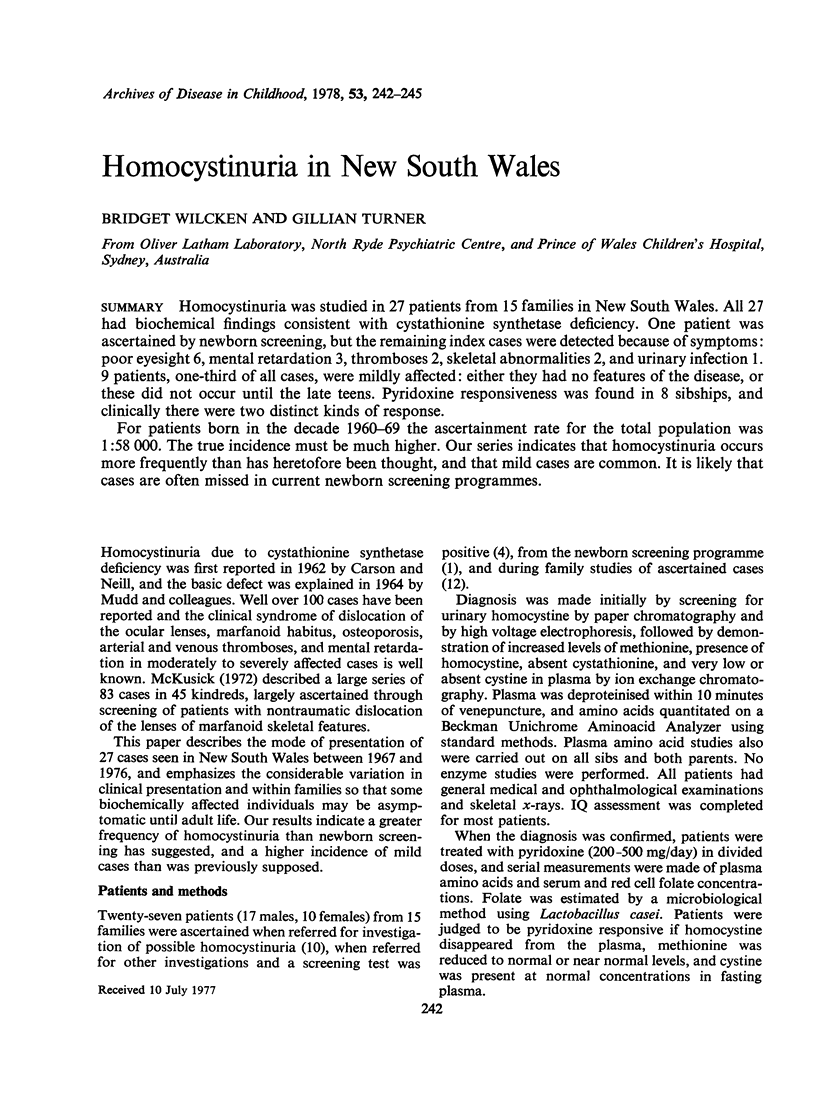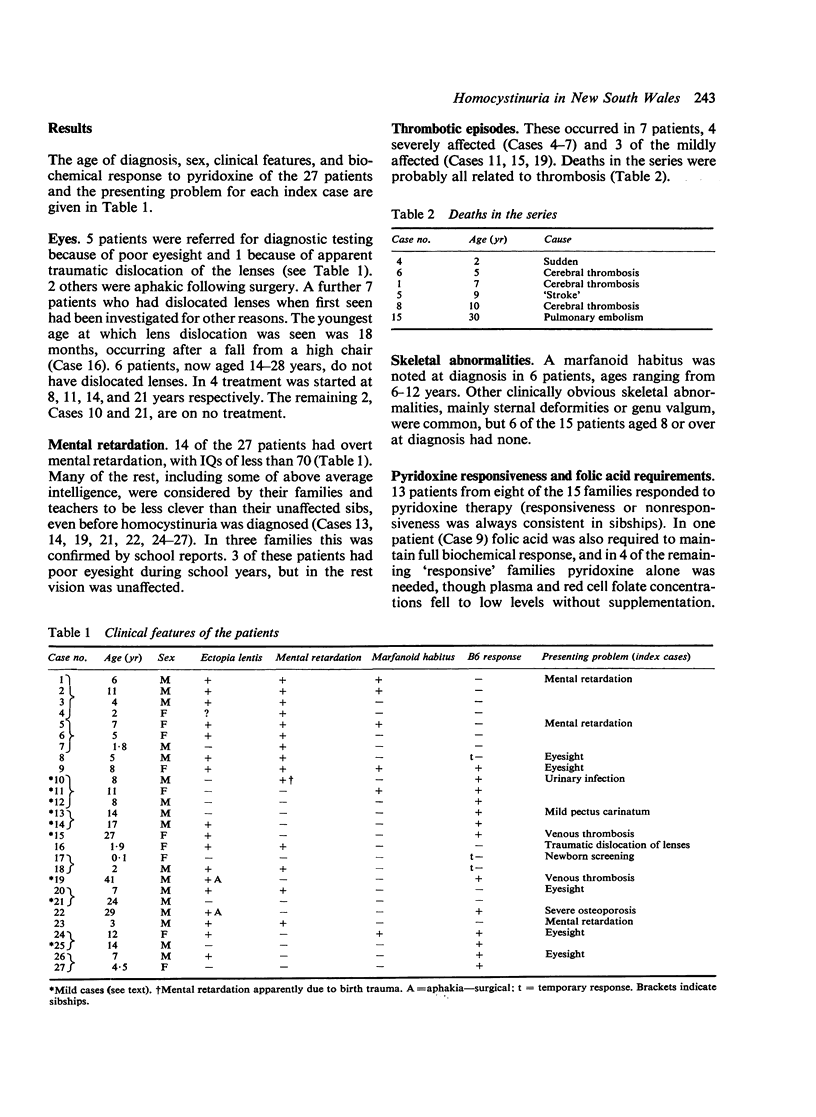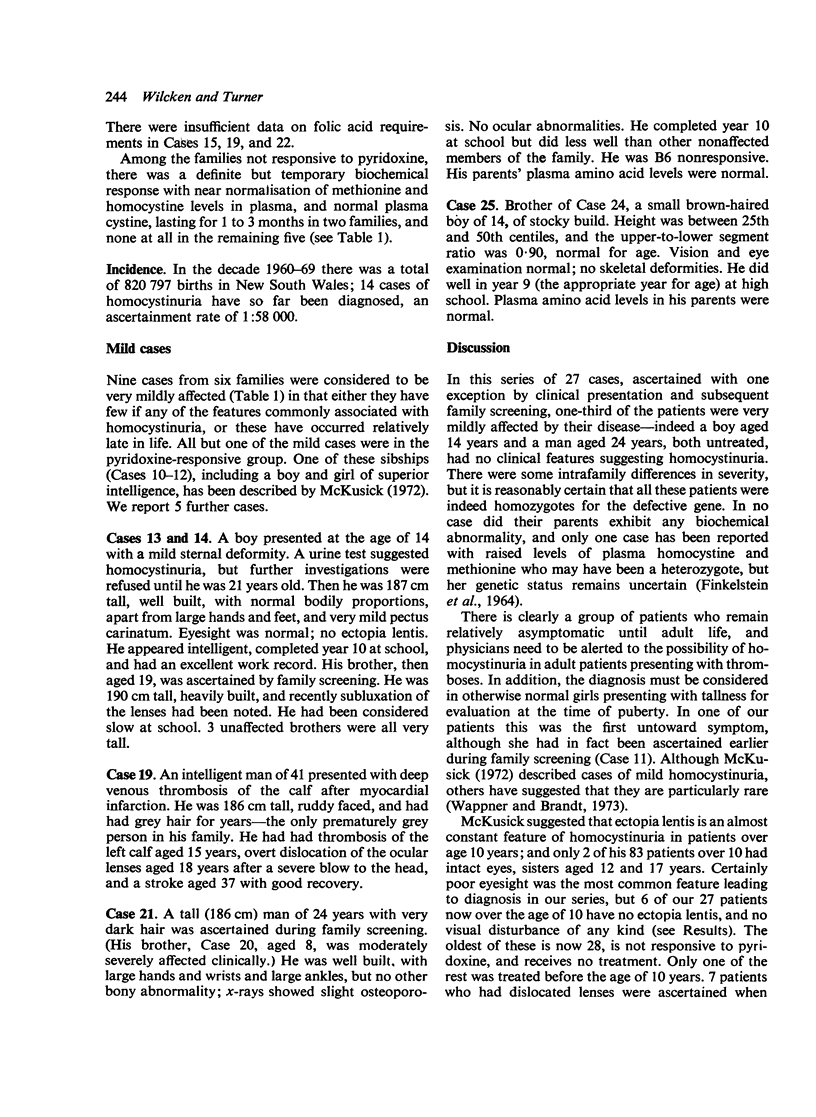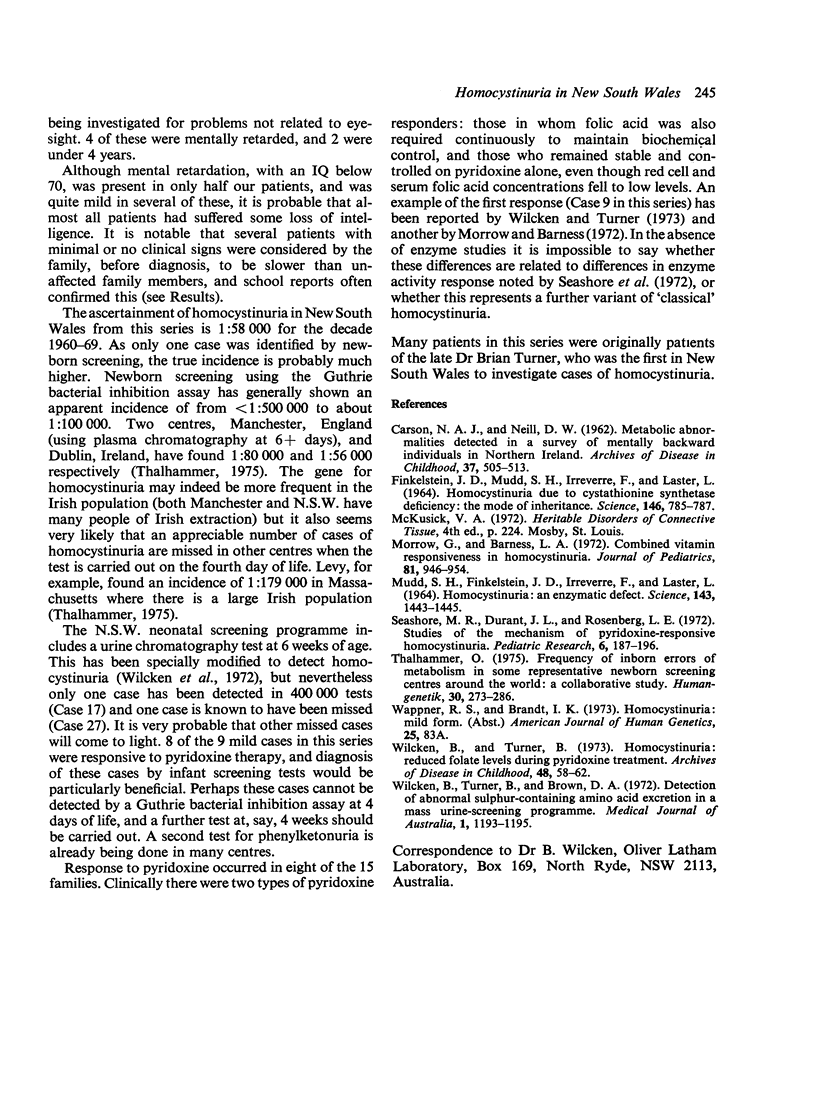Abstract
Homocystinuria was studied in 27 patients from 15 families in New South Wales. All 2 had biochemical findings consistent with cystathionine synthetase deficiency. One patient was ascertained by newborn screening, but the remaining index cases were detected because of symptoms: poor eyesight 6, mental retardation 3, thromboses 2, skeletal abnormalities 2, and urinary infection1. 9 patients, one-third of all cases, were mildly affected: either they had no features of the disease, or these did not occur until the late teens. Pyridoxine responsiveness was found in 8 sibships, and clinically there were two distinct kinds of response. For patients born in the decade 1960-69 the ascertainment rate for the total population was 1:58 000. The true incidence must be much higher. Our series indicates that homocystinuria occurs more frequently than has heretofore been thought, and that mild cases are common. It is likely that cases are often missed in current newborn screening programmes.
Full text
PDF



Selected References
These references are in PubMed. This may not be the complete list of references from this article.
- CARSON N. A., NEILL D. W. Metabolic abnormalities detected in a survey of mentally backward individuals in Northern Ireland. Arch Dis Child. 1962 Oct;37:505–513. doi: 10.1136/adc.37.195.505. [DOI] [PMC free article] [PubMed] [Google Scholar]
- FINKELSTEIN J. D., MUDD S. H., IRREVERRE F., LASTER L. HOMOCYSTINURIA DUE TO CYSTATHIONINE SYNTHETASE DEFICIENCY: THE MODE OF INHERITANCE. Science. 1964 Nov 6;146(3645):785–787. doi: 10.1126/science.146.3645.785. [DOI] [PubMed] [Google Scholar]
- Frequency of inborn errors of metabolism, especially PKU, in some representative newborn screening centers around the world: a collaborative study. Humangenetik. 1975 Dec 23;30(4):273–286. [PubMed] [Google Scholar]
- MUDD S. H., FINKELSTEIN J. D., IRREVERRE F., LASTER L. HOMOCYSTINURIA: AN ENZYMATIC DEFECT. Science. 1964 Mar 27;143(3613):1443–1445. doi: 10.1126/science.143.3613.1443. [DOI] [PubMed] [Google Scholar]
- Morrow G., 3rd, Barness L. A. Combined vitamin responsiveness in homocystinuria. J Pediatr. 1972 Nov;81(5):946–954. doi: 10.1016/s0022-3476(72)80548-1. [DOI] [PubMed] [Google Scholar]
- Seashore M. R., Durant J. L., Rosenberg L. E. Studies of the mechanism of pyridoxine-responsive homocystinuria. Pediatr Res. 1972 Mar;6(3):187–196. doi: 10.1203/00006450-197203000-00007. [DOI] [PubMed] [Google Scholar]
- Wilcken B., Turner B., Brown D. A. Detection of abnormal sulphur-containing amino acid excretion in a mass urine-screening programme. Med J Aust. 1972 Jun 3;1(23):1193–1195. doi: 10.5694/j.1326-5377.1972.tb116567.x. [DOI] [PubMed] [Google Scholar]
- Wilcken B., Turner B. Homocystinuria. Reduced folate levels during pyridoxine treatment. Arch Dis Child. 1973 Jan;48(1):58–62. doi: 10.1136/adc.48.1.58. [DOI] [PMC free article] [PubMed] [Google Scholar]


